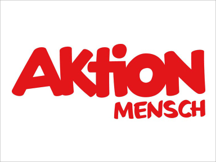


In the eponymous webinar by the naming agency NOMEN, marketing professionals recently received a lightning refuelling on the topic of renaming. Here’s a recap for those who couldn’t be there!
Every name change is a strategic decision, that greatly influences the identity and orientation of a company. So when is a name change meanigful or even necessary? What success factors are there and what are the potential challenges? And how does one target different interest groups? We have outlined some of the basics below:
Definition: Renaming vs Rebranding
Renaming involves changing the company or product name. The focus is on introducing a new identity.
Rebranding includes a change in the corporate identity (CI) or the logo. The brand name is not necessarily changed. The focus lies more in the update of the appearance.
Reasons for Renaming
1 .Business combinations

If businesses combine, a new name can symbolise the joint identity and strengthen cohesion. As always with renaming there are several options: A combination of both names, a totally new name or a continuation of one of the two names.
Beispiel: MG + GEA → GEA
2. Spin offs

With a new company name, spin offs can establish an independent identity and strengthen their brand positioning in the market.
Example: iqony as an independent subgroup of the Steag group

3. Internationalisation
When opening up international markets, a new name can overcome languge barriers, show cultural sensitivity and position the brand precisely.
Example: Fressnapf in Germany → Maxi Zoo in other European markets
4. Trademark law problems

Legal conflicts can be avoided by changing the name.
Example: Match Box → Tinder

5. Brand positioning
A new name can support a repositioning of the brand to align with changing target groups or social values.
Example: Aktion Sorgenkind → Aktion Mensch
6. Introduction of a holding company

A holding company can use a new corporate brand to structure its subordinate brands more clearly and highlight its business areas.
Example: Google → Alphabet
7. Change of the business field

When a company changes its business model, a new name communicates the new direction and can strengthen credibility.
Example: Dunkin’ Donuts → Dunkin
Why is renaming so challenging?
The name is an intangible corporate asset, i.e. it is not physically tangible, but it has a significant economic impact. As a communication platform, it forms the basis for all interaction with the brand. For example, it ensures:
Best practise: JYSK

NOMEN Managing Director Sybille Kircher cited the renaming of the Danish Bed Warehouse to JYSK as a successful example. The furnishing company has been on the market since 1979, is present in 49 countries and achieved a turnover of 1.1 billion Euros in Germany alone in 2020. In order to reposition itself from “Bettenlager” to a provider of “Scandinavian Sleeping & Living”, a new name was not the only thing sought. The renaming was accompanied by:
Within three years, a total of 950 shops were rebranded and an expansion to 1,150 shops is planned. The cost of the rebranding was 250 million Euros. One year after the launch of the new name JYSK in September 2021 (JYSK is Danish and means “Jutlandic”), sales had increased by 20 % and 13 % more customers visited the stores than in the previous year.
How do you convince different stakeholders?
What is the benefit of the name change and how much are we willing to put into this investement?
Advocates from your own ranks are important multipliers to communicate the benefits of renaming and to gain more supporters.
This includes selecting the agency, preparing a detailed briefing and conducting interviews with staff and clients to get a picture of opinion and sentiment.
Involving decision-makers is essential when developing and evaluating naming options. The name review, final decision and approval take place in this phase.
A brand hub and internal communication with brand ambassadors and staff pave the way for success.
The roll-out strategy for the new brand name includes the creation of a brand book, a video message from the company management as well as a launch campaign and customer events.
Gathering customer feedback, tracking the development and continuously adapting the communication ensure the success of the renaming in the long run.
Conclusion
Successful renaming requires a thorough analysis of opportunities and risks, careful project management with generous time and budget planning, and convinced decision-makers in the company. Staff enthusiasm and training are essential, as is accompanying communication for customers and business partners.
Are you looking for an internationally experienced partner for your renaming project? NOMEN accompanies you from A to Z: +49 (0) 211 5779060 or info@nomen.de.
Foto von Charlie Firth auf Unsplash